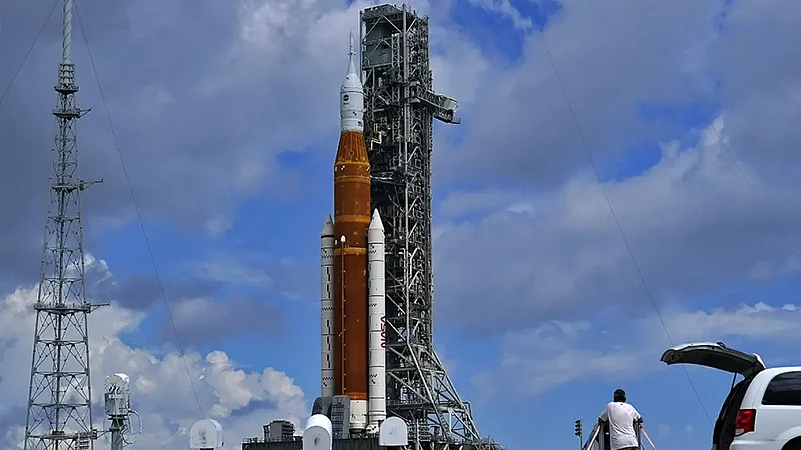The US space agency NASA is set to launch the Spece Launch System (SLS) rocket as part of the Artemis space program on Saturday afternoon (US local time).
The lift-off is scheduled to take place no before 2:17 pm EDT (11:47 pm IST). The NASA reported the fuelling process on Saturday, but the process and perhaps the overall launch schedule, has been slowed by a leak during the process. The NASA personnel are working on the issue.
Earlier on Monday, the NASA had postponed the SLS launch after encountering engine malfunction. A leak during the fuelling process was also reported on Monday but a report on Saturday said that the current leak is not similar to the one found and eventually sorted out on Monday.
Advertisement
The SLS rocket would take the Orion spacecraft into space, which is the first leg of the Artemis space program. Outlook earlier reported: "The rocket will drop Orion into space where it will travel past the moon and cover 1.3 million miles before splashing down on Earth at the end of its 42-days journey."
The Artemis I scheduled to be launched today will pave the way for Artemis II, which would replicate Artemis I's journey but with humans onboard. Eventually, after the success of Artemis I and II, the third leg of the programs would land humans on the Moon for the first time in over five decades.
Advertisement
The objectives of the Artemis space program are, however, much more ambitious than merely going back to Moon. The ultimate objective is to make Moon as a stepping stone to go to Mars.
"We will collaborate with commercial and international partners and establish the first long-term presence on the Moon. Then, we will use what we learn on and around the Moon to take the next giant leap: sending the first astronauts to Mars," said NASA.
The NASA will set up a "base camp" on Moon which would allow "robots and astronauts to explore more and conduct more science than ever before".
As for the stated objectives, the NASA said that they are "going back to the Moon for scientific discovery, economic benefits, and inspiration for a new generation of explorers: the Artemis Generation".
As the Sun rose on Saturday, an over-pressure alarm sounded and the tanking operation was briefly halted, but no damage occurred and the effort resumed, NASA's Launch Control reported.
Forecasters expected generally favourable weather at Kennedy Space Center, especially toward the end of the two-hour afternoon launch window. At the same time, the rocket's lead engineers expressed confidence in the tightened-up fuel lines and procedure changes.
On Monday, a sensor indicated one of the four engines was too warm, but engineers later verified it actually was cold enough. The launch team planned to ignore the faulty sensor this time around and rely on other instruments to ensure each main engine was properly chilled.
Advertisement
Before igniting, the main engines need to be as frigid as the liquid hydrogen fuel flowing into them at minus-420 degrees Fahrenheit. If not, the resulting damage could lead to an abrupt engine shutdown and aborted flight. Mission managers accepted the additional risk posed by the engine issue as well as a separate problem: cracks in the rocket's insulating foam. But they acknowledged other problems could prompt yet another delay.
That didn't stop thousands from jamming the coast to see the Space Launch System rocket soar. Local authorities expected massive crowds because of the long Labour Day holiday weekend.
The launch window on Saturday is one of the two windows available. The second one would be on Monday. If the rocket could not be launched on both the days, then the launch might be delayed till even October.
Advertisement
The Verge explained that there is a 20-day period for launch once the rocket leaves Vehicle Assembly Building (VAB). The 'flight termination system' of the rocket would need to be tested all over again if the 20-day period gets over. If the SLS is not launched by Monday, it would likely go back to VAB for such testing.
"That testing takes time, so if SLS is forced to come back to the VAB after rolling out in August, chances are it wouldn’t be ready to fly until late October," reported The Verge.
(With AP inputs)




















